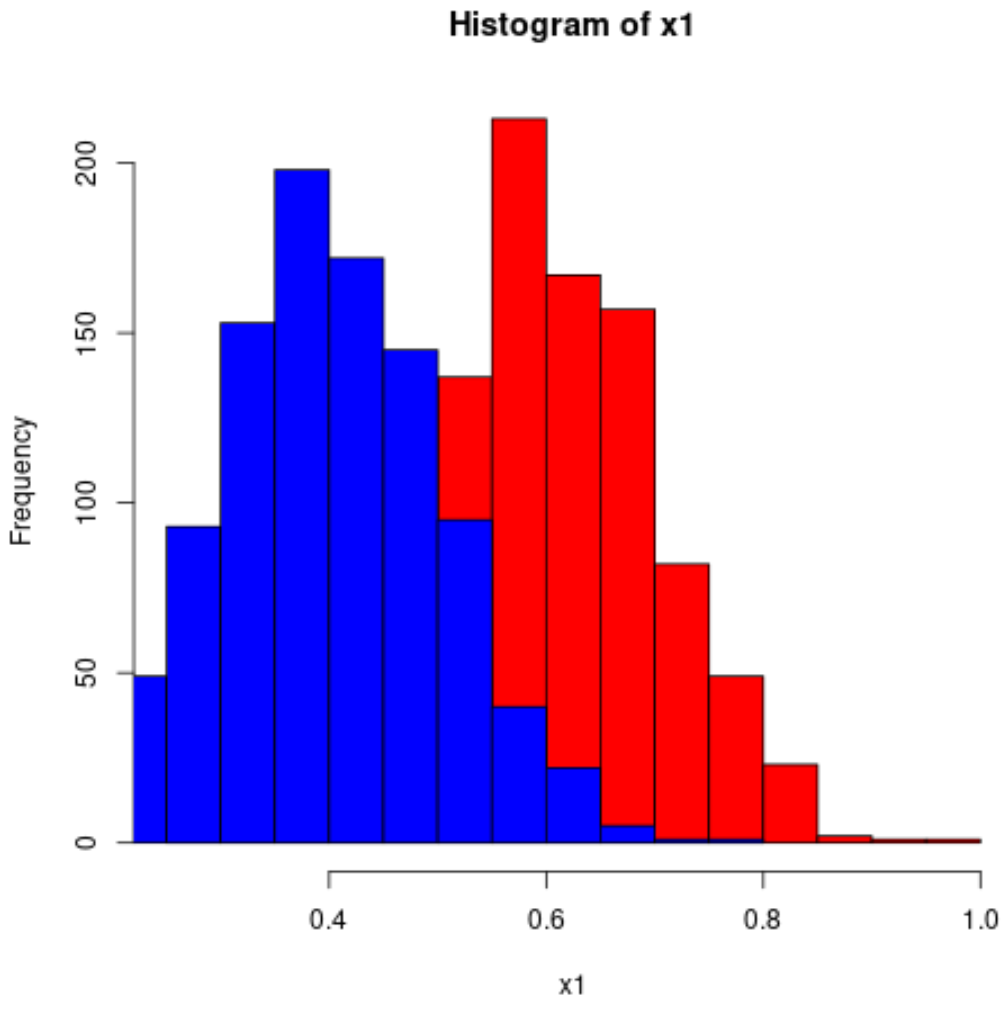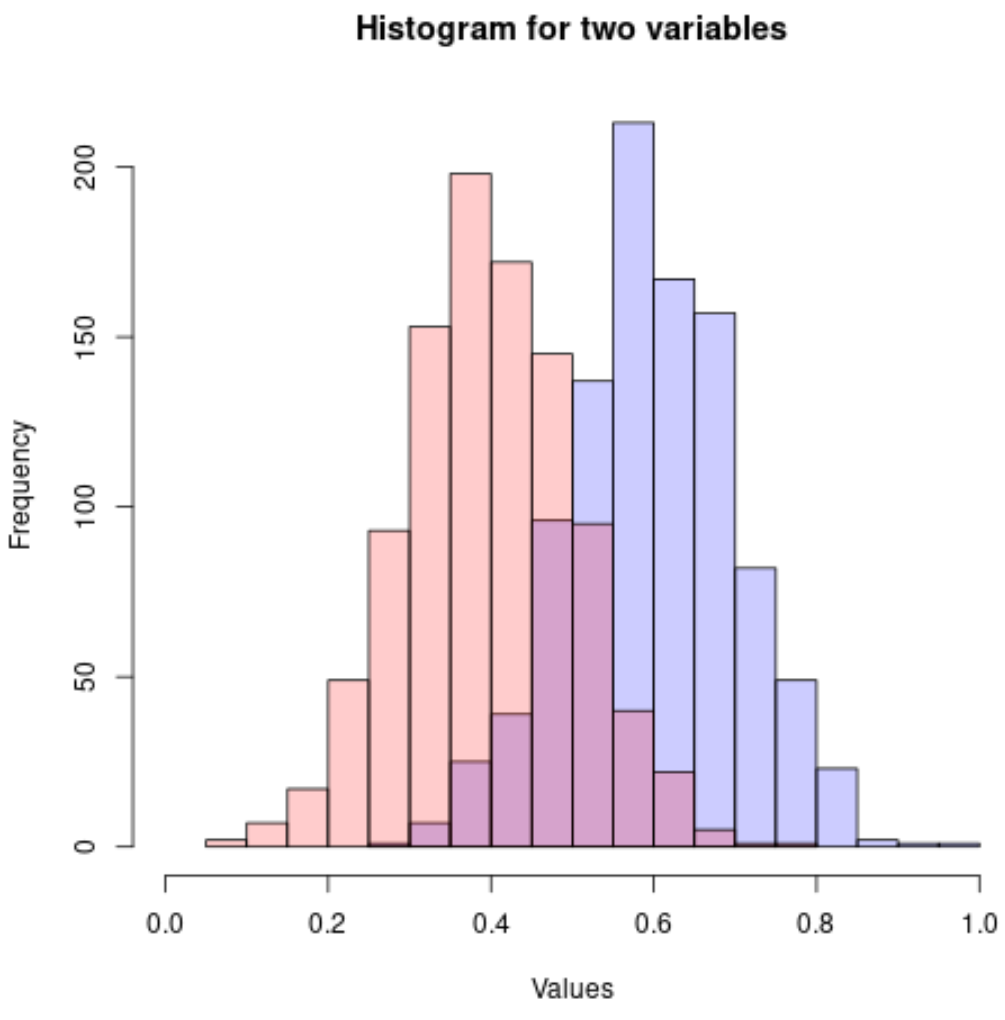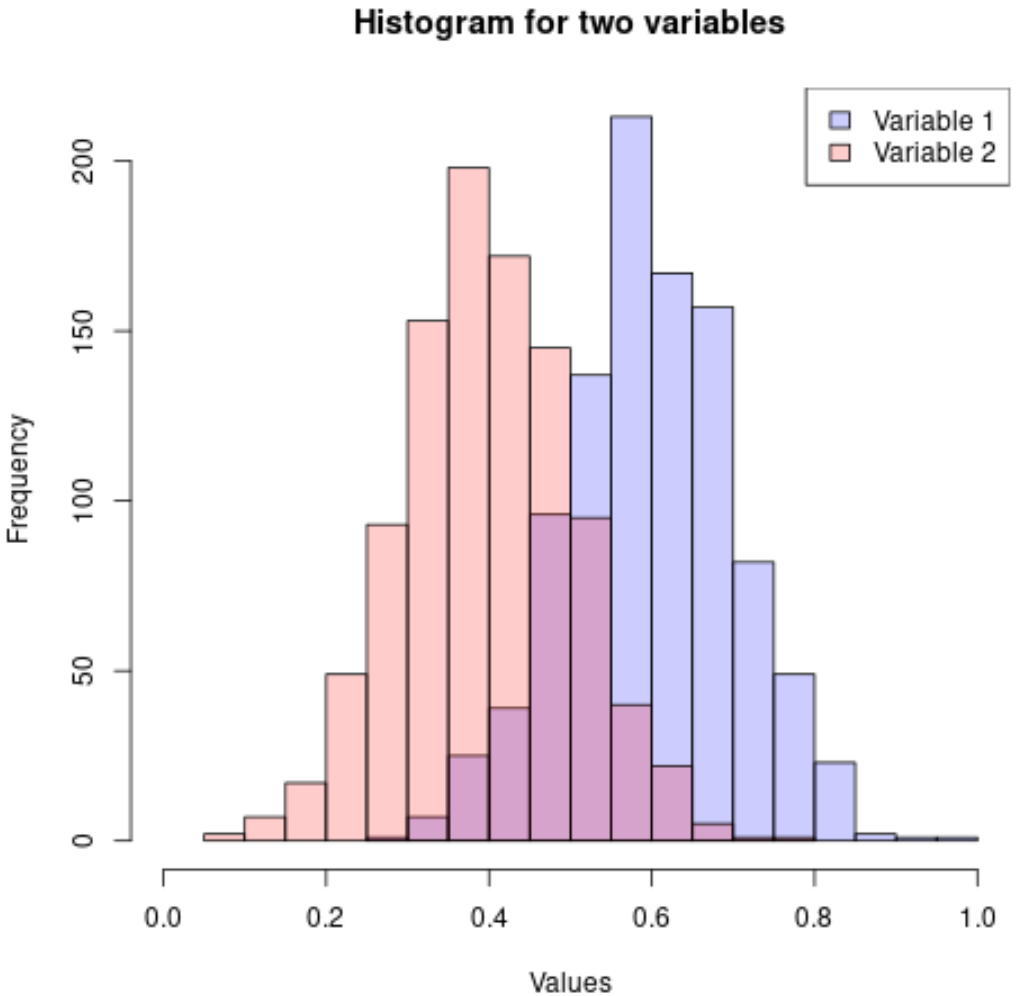R で 2 つの変数のヒストグラムを作成する方法
ヒストグラムは、特定の変数の値の分布を視覚化するのに便利な方法です。
R で変数のヒストグラムを作成するには、 hist()関数を使用できます。 R で 2 つの変数のヒストグラムを作成するには、次の構文を使用できます。
hist(variable1, col=' red ') hist(variable2, col=' blue ', add= TRUE )
次の例は、この構文を実際に使用する方法を示しています。
例: R の 2 つの変数のヒストグラムを作成する
次のコードは、R で 2 つの変数のヒストグラムを作成する方法を示しています。
#make this example reproducible set. seeds (1) #define data x1 = rnorm(1000, mean=0.6, sd=0.1) x2 = rnorm(1000, mean=0.4, sd=0.1) #plot two histograms in same graph hist(x1, col=' red ') hist(x2, col=' blue ', add= TRUE )

ヒストグラム値が重なるため、透明度を高めたrgb()カラーを使用することをお勧めします。
#make this example reproducible set. seeds (1) #define data x1 = rnorm(1000, mean=0.6, sd=0.1) x2 = rnorm(1000, mean=0.4, sd=0.1) #plot two histograms in same graph hist(x1, col=rgb(0,0,1,0.2), xlim=c(0, 1), xlab=' Values ', ylab=' Frequency ', main=' Histogram for two variables ') hist(x2, col=rgb(1,0,0,0.2), add= TRUE )

凡例を追加して、ヒストグラムを解釈しやすくすることもできます。
#make this example reproducible set. seeds (1) #define data x1 = rnorm(1000, mean=0.6, sd=0.1) x2 = rnorm(1000, mean=0.4, sd=0.1) #plot two histograms in same graph hist(x1, col=rgb(0,0,1,0.2), xlim=c(0, 1), xlab=' Values ', ylab=' Frequency ', main=' Histogram for two variables ') hist(x2, col=rgb(1,0,0,0.2), add= TRUE ) #add legend legend(' topright ', c(' Variable 1 ', ' Variable 2 '), fill=c(rgb(0,0,1,0.2), rgb(1,0,0,0.2)))

このページでは、その他の R チュートリアルを見つけることができます。